Ford has announced that it will develop its GT supercar at to run at Le Mans in 2016.
It's not the first time the company has made waves at the internationally renowned race. Ford first made major headlines at Le Mans in 1966, when it aimed to break Ferrari’s domination of the race. The Italian company had won seven out of the previous eight races, and animosity between the two marques added to the atmosphere at that year’s meeting.
We’ve delved into the Autocar archives to find the report from the 1966 race, with the highlights below:
Race Day
Once again we sit in the new Press stand at Le Mans - a fine new stand this year, directly opposite the pits so that pit stops will become a source of interest instead of conjecture. The cars, which have so many miles ahead of them, are lined up in echelon at their pit counters surrounded by hundreds of people (who, strictly, don’t look quite the type to qualify for the correct passes, but somehow manage to acquire them).
A band has marched down from the direction of the Esses, and has come to rest facing us - and is playing the Star Spangled Banner (while all but the Press stand to attention; printing schedules enjoy immunity.)
The flat Sarthe district stretches away to the horizon under heavily clouded skies, while a strong wind carries a dust cloud up from the famous White House corner. The British National Anthem follows - which enjoys immunity even from press schedules; we rise to attention, while a helicopter flies around, looking like a herring’s skeleton still attached to its head.
For safety reasons the escape road to which Walt Hansgen took at that time of his fatal accident has been blanked off; now there is no escape for a driver losing control as he passes the pits. And a few drops of rain are already beginning to fall. The national anthems continue - representing the eight nationalities of the drivers present. The “Village” behind the pits, with its shops, restaurants, advertising banners by the thousands and multitude of flags, looks less colourful in the grey light.
But the stands are packed, sold out a fortnight ago and the stage is set for the drama that is to last the next 24 hours. Its respects paid, the band marches on down the road to the White House, followed by bearers carrying the eight national flags; some of the Ferraris change to wet-weather Dunlop tyres in preparation for what is clearly to come. The dust flowing up from White House now lies thick on the typewriter, which is in for an abrasive 24 hours.
By 3.15 pm the road is uniformly wet, and the cars are milling about, pushed by their attendant mechanics, taking up starting positions in order of practice times - Fords occupying the six foremost slots, with the controversial 4-litre P3 Ferrari of Parkes and Scarfiotti (late Parkes and Surtees) in seventh place; and the public address seemingly concentrated on the Press stand is blasting forth as it will do for the next 24 hours.
The pits are packed with people, perched tier upon tier on five levels; and now Peter Sutcliffe’s Ford is changed to wet-weather tyres. The countdown to Le Mans may not be as theatrical as at Indianapolis, but it is very, very tense.
Ten minutes to go…the din of the engines has stopped and is replaced by the steady thump thump of hub clutters as mechanics down the line change the tyres. The course car goes off to inspect the circuit and the colours in the village suddenly brighten as the sun peers through the heavy cloud layer. Graham Hill walks past the pits to his car and everybody claps and cheers with pent-up enthusiasm, One by one, with feigned nonchalance, the drivers saunter across the road to their starting spots, opposite their cars to wait for the off. An official calls Bondurant to close his door.
“Une minute…silence s’il vous plait”… Then suddenly, tension released, they scamper across the road and are off, with Scott’s and Revson’s Ford GT40 leading the pack, and the Hermann-Linge works-entered Porsche left on the echelon until everyone has gone. The 24-hour marathon has begun.
Opening laps
Graham Hill brought his silver Ford around in the lead, followed by Gurney’s, Whitmore’s and Bucknam’s Fords and Parkes’ Ferrari. Miles took his Ford into the pits, as did Hawkins (whose halfshaft had broken at full speed on Mulsanne) and Dini (ASA) to have his door secured (and then couldn’t reopen it). Hill’s standing lap was in 3min 36.1sec. All 55 starters completed with the order in front unchanged.
On the fourth lap Dan Gurney took the Shelby American Ford into the lead ahead of Hill’s Alan Mann car, After only 24 minutes, the Berney Bizzarrini was into the pits, followed by Kolb’s Dino Ferrari - whose sister car driven by Vaccarella was circulating very sedately, obviously in trouble. And the Attwood-Piper Maranello Concessionaires 4.4-litre Ferrari, too, seemed in no great hurry. Eventually, Vaccarella brought in the Dino, which was retired with chronic overheating and a seized piston, while the Berney Bizzarini, after another pit-stop, was also removed to the dead-car park with a broken frame. Gosselin was also in the pits with the Equipe Nationale Belge Ferrari 3.3-litre GTB, no fewer than eight cars having been brought into the pits after only half an hour’s racing.
Though the name Ferrari seemed to be in trouble, particularly as far as the Dinos were concerned, Ford weren’t without theirs, for Rindt’s engine blew up by the Hippodrome and came to rest before Ireland had a go. Sauer’s Serenissima and Servoz’ Matra-BRM, too, came in, while Gurney sailed on in the lead from Hill, Bucknum (all in Ford Mk2s) and Rodriguez and Parkes (in Ferraris). As Miles climbed back through the field the lap record was falling time and again; 3min 36.4sec (7th lap), 3min 34.2sec (9th) 3min 34.2sec (13th, 3min 31.1sec (15th).
As the first hour turned into the second, the Hawkins Ford Mk2 re-joined the race, having been at the pits for the best part of an hour, replacing a half-shaft - and 11 minutes later, the Bonnier-Hill Chaparral, sole representative of the marque, came in for the first of the routine stops for fuel.
Eight minutes later the Maranello Concessionaires’ Dino Ferrari was pushed away, retired with a broken differential. Then came the rest of the leading cars, in for fuel and driver change…
Bucknum, Parkes, Ken Miles (lying fifth after a pit stop on completing the first lap, which dropped him back to 42nd; his climb back to the front had included the 20th lap in 3min 31.9sec, or 138-odd mph), and Graham Hill, Dan Gurney and the rest. The Chaparral made its routine stop, then came in for a brief stop again 14 minutes later, this cluster of stops being completed roughly between 5 and 5.30pm. The order when they have been completed settled down once more to Gurney, Miles, (after a fantastic drive) Rodriguez, Bucknum, Graham Hill, Parkes and McLaren - Ford, Ford, Ferrari, Ford, Ford, Ferrari and Ford.
On the debt side, Ferrari had lost three cars (two Dinos and an ailing Maranello Concessionaires’ 4.4-litre soon to retire with overheating) to Ford’s blow up on the Mulsanne Straight. At almost 6pm, Klass heroically arched his works Porsche Carrera 6 into the pits, after a further two stops, following its initial hour’s halt to replace the a half shaft, rejoined the race very briefly minus its big rear body section, which had flown off and landed in a tree on Mulsanne Straight. Shortly afterwards it was back again, the tail section recovered and refitted by Donohue. The ASA of Dini and Giunti was in trouble with its steering and the Serenissima of Sauer and de Mortemart had no gear linkage left. The third and last Dino Ferrari (Kolb’s) had by now retired with overheating.
Second Routine Pit Stops
The report continues to describe the action of the following hours as darkness approaches. Highlights include the following:
“Though a few drops of rain had started to fall earlier, Mulsanne Corner had been surprisingly free of incident, Masten Gregory’s Ferrari providing one of the few excitements when it headed straight for the sandbanks, all four wheels locked; but all was well.”
At 9.30pm, five and a half hours in, the writers report that all three Dino Ferraris, two big Ferraris and three of the Fords have retired. Ken Miles’ and Denny Hulme lead the race in an ASA, with Gurney and Grant’s Ford in second, with Rodriguez and Ginther’s Ferrari in third.
However, the Rodriguez and Ginther Ferrari came into the pits at 1.45am for what proved to be the last time - it suffered a gearbox issue that was to prove terminal, and it was finally retired at 2.28am.
“With the dawn breaking green over the pine trees at the Esses, any hope of a Ferrari recovery went by the board when the P3 came into the pits and was immediately wheeled away.”
“At 4am, with the race half over, Fords filled the first six places.”
As the countryside detail became visible again in the chilly light, deserted pits showed that only 29 of the original 55 starters were still running. Just one of the works Ferraris, the Bandini-Guichet car was still running, right down in 12th place. All the CDs had gone, but the Alpines were really mixing it with Porsche on the Index of Performance, so the French had something to look forward to. The Porsches, on the other hand, were playing things very gently -- all bar one of their cars, the Buchet Carrera, were running. A superb performance was being given by the "Franc"-Kerguen 911, which looked and sounded virtually standard, yet was lying in the 25th place against far more "racy" machinery.
Pit stops in the Ford camp had produced a new leader -- the Gurney-Grant 7.0-litre car, which had been lying second. At 6am, this car had completed 215 laps. In second place, one lap behind, was the Miles-Hulme car, and third was the the Mclaren-Amon Ford, also one lap behind. The Porsche ranks were broken by the Sutcliffe-Spoerry Ford GT40 in seventh place, with one Porsche (Davis and Siffert), ahead of it an with three more behind it.
Scarcely had the 8am positions on distance been announced than the news came through that the Sutcliffe-Spoerry Ford GT40, lying fifth, had been involved in a n accident at Tertre Rouge, Spoerry being uninjured and walking back to the pits, but the car out of the race. A not properly closed fuel cap had splashed fuel on to the tyres and the car had skidded. Fords, therefore, held the first four, not five, places, with no fewer than six Porsches snapping at their heels with less than a third of their engine capacity. The sun now blazed down on the circuit and the surrounding enclosures which, typically of Le Mans, lay inches deep in dust, paper and empty bottles. Information is not easy to come by at Le Mans, partly because of darkness and partly due to cars breaking down at the far side of the long, 8.3-mile circuit, so that the news service provided by Players and Sales Link, became invaluable in providing some information.
In the meantime, the Miles-Hulme Ford had been making a succession of brief pit stops "for observation," we were told. Le Mans hadn't finished with its twists of fate, for just before 10am the leading, Gurney-Grant, scarlet Ford Mk. 2 came into the pits - and, to the appreciative claps of the now packed stands, was wheeled away to join the crowded dead car park, retired with engine overheating. So, only three Fords - lying first, second and third, remained of the mighty strength that had set out; and five Porsches raced almost in formation behind them, putting up a truly fantastic performance, and biding their time...
Interrupted by the routine fuel stops and driver changes, the ran on through Sunday forenoon, the McLaren-Amon Ford Mk. 2 ahead, followed by the Miles-Hulme sister car - both entered by Shelby American and both on the same lap after nearly 20 hours' racing. Third, and six laps behind the two leaders, followed the Bucknum-Hutcherson Mk. 2, representing Holman and Moody. So far, the Shelby cars had proved the more reliable since, until the Gurney-Grant car had retired earlier on Sunday morning, all three of his entries had been running first, second and third. At 11.15 the leading McLaren-Amon Ford came into the pits, still running sweetly, for a routine fuel stop and driver change, yielding the lead to the Miles-Hulme car - which shortly came in for its own routine stop, and the position was restored. Of the 55 starters, 18 cars remained.
The second Austin-Healey Sprite retired at 12.30 on Sunday, with only three and a half hours left before the finish, and with a blown head gasket, out on the circuit. This left, out of the three British-built cars in the race, the Belgian-entered Mini-Marcos with its 1287cc engine and only 250 miles on the clock when it started the long battle. Alex Issigonis, with a personal interest in Le Mans, therefore, watched its progress from the Press stand. The Porsches, running like clockwork, made their routine stops - fuel, change of driver and the rear wheels jacked up apparently for no reason other than to check the treads (otherwise shrouded by the bodywork).
With nothing fast enough to catch them on sheer speed, the Miles and McLaren Fords seemed to have eased right back - guesses at their lap times were around 4min 20sec, but in fact they were getting round in between 3min 56 and 59sec, their power making it seem deceptively easy.
The southerly wind that blew up the pits straight from White House strengthened at around 2pm on Sunday, bringing rain with it and once more slowing the race. But the pattern seemed set by now, and the race ran on, the order changing and changing back again as the routine pit stop occurred. Le fievre d'endurance seemed to have gripped people other than those racing, for in one of the many cafes, a gentleman in a pale blue suit was playing an accordion from 4pm Saturday until 4pm Sunday. It takes all sorts...
The Porsche Carreras, in third, fourth, fifth and sixth places, were running with watch-like regularity, under the careful eye of Huschke von Hanstein, who reported that the only replacements which had been made to the cars during the race had been a revcounter and a rear lamp bulb. But Le Mans was living up to its tradition, and with just an hour and a quarter to go, the Gregg-Alexson Carrera 6 came in obviously in trouble, and crowds flocked round it as the mechanics set to work to change a broken valve. At the same time, the Davis-Siffert car came in, Davis handing over to Siffert and taking on fuel - then suddenly Ford No. 5 - driven by Bucknum and Hutcherson went overdue, having stopped at Mulsanne. But with the Ford's nine-lap advantage over Siffert there was no question of the Porsche going up into third place. Then the Ford reappeared, as fast as ever.
Through delays caused by routine pit stops, the McLaren-Amon Ford had now dropped to second position, a few seconds behind the Miles-Hulme car- the two cars under strict orders not to do battle for the lead... and the long Le Mans grind ran into its final hour, with Fords still first, second and third... and the Gregg-Axelson Carrera 6 still standing at its pit. Only 15 cars remained of the 55 that had started.
The final stages…
As the race entered its last half-hour, the Miles-Hulme Ford passed through the pits area with the McLaren Amon Ford hard on its tail. Though the importance of team orders at this stage of the long race was obviously clear, one hoped that the two New Zealanders might perhaps pull it off, as compensation for their Formula 1 setbacks this season.
Then it started to rain, the familiar plumes of spray went up and the drivers started changing down for the pits bend - the Ford times dropped to over five minutes - instead of storming it at almost full bore. Traditionally Le Mans was keeping things going until the finish.
“Dix minutes” the ever-present public address announced, and to a roar of cheering the “coppers” began to form up along the line of the pits counters. It all seemed a slight anti-climax; another Vingt-Quatre Heures was about to finish - and the two leading Fords formed up neck-and-neck to complete their final lap.
This was surely a much-needed breath of fresh air, that the age-old Ferrari domination of the race should be ended and a completely new name added to the list of winners. The two leading Fords crossed the line ever so gently in an absolute dead heat… Because McLaren had started farther back than Miles, he was the winner - remarkable result but intended by Ford who were fully aware of the rule. Le Mans finished grey, as it had started, but not for Ford, whose tremendous and costly campaign had at last been rewarded.
Get the latest car news, reviews and galleries from Autocar direct to your inbox every week. Enter your email address below:

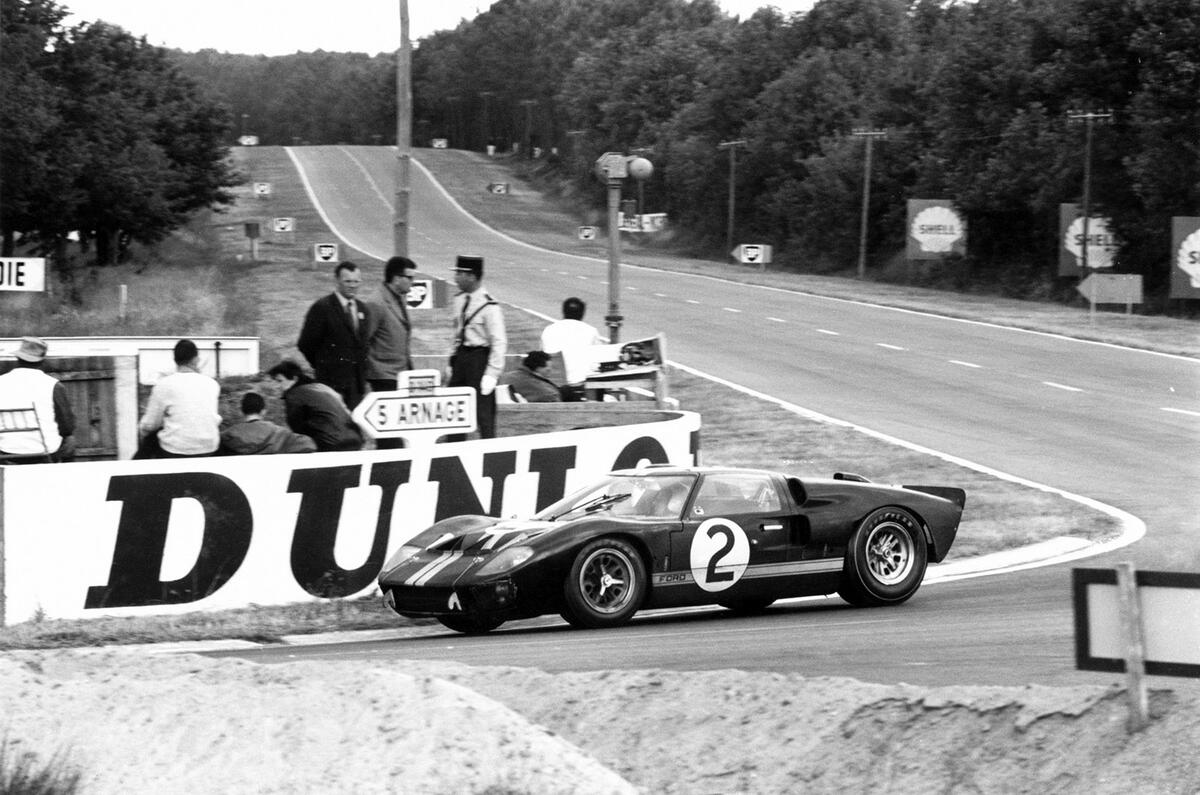
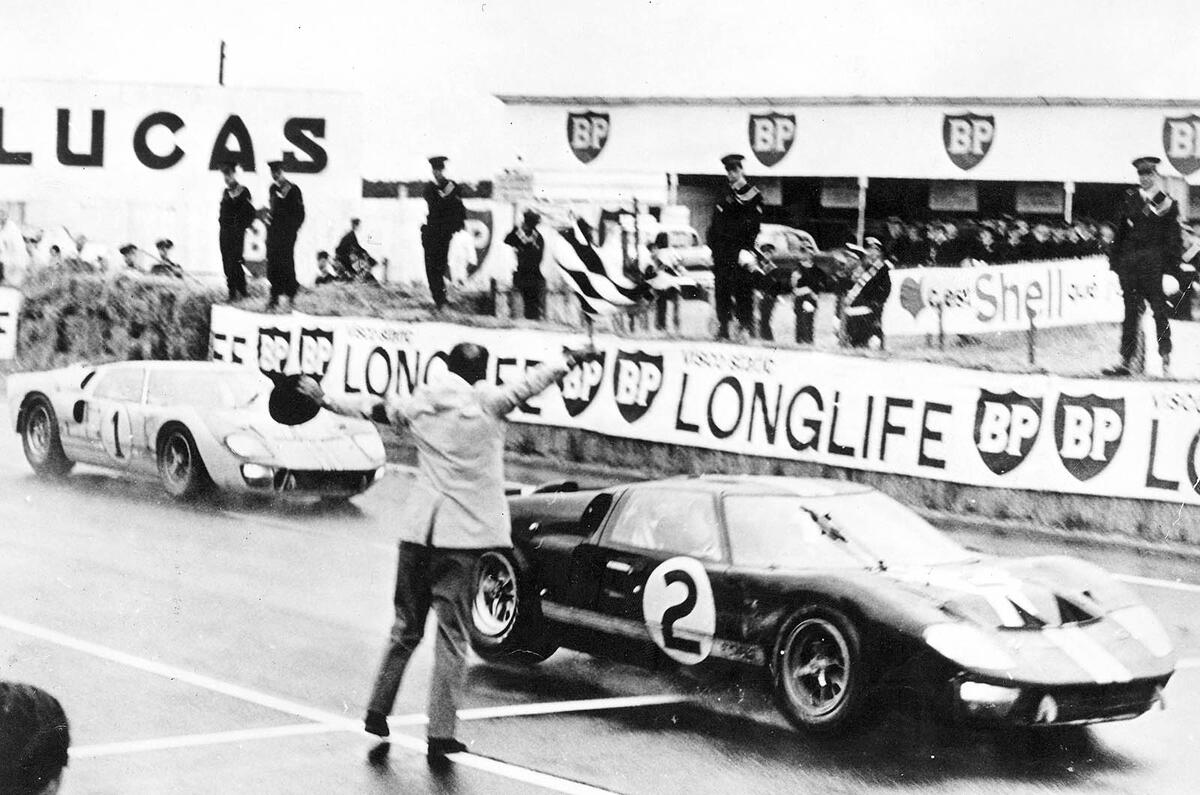
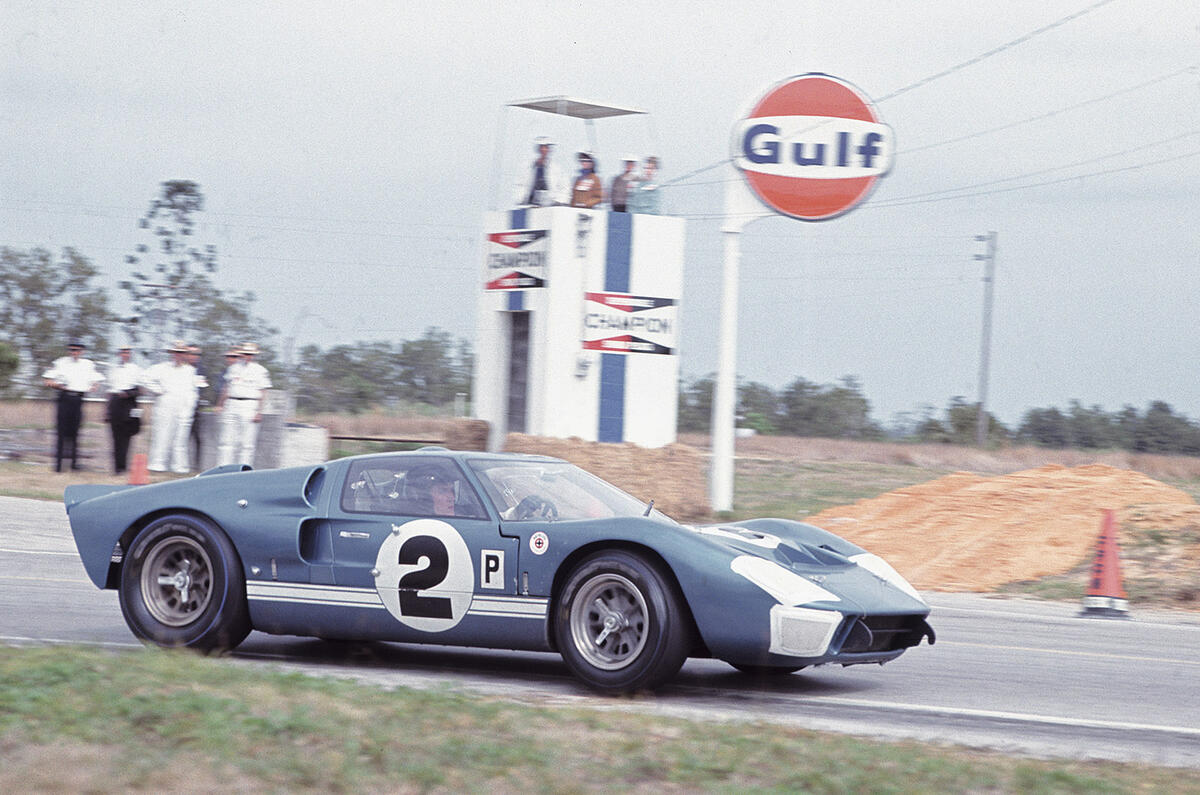
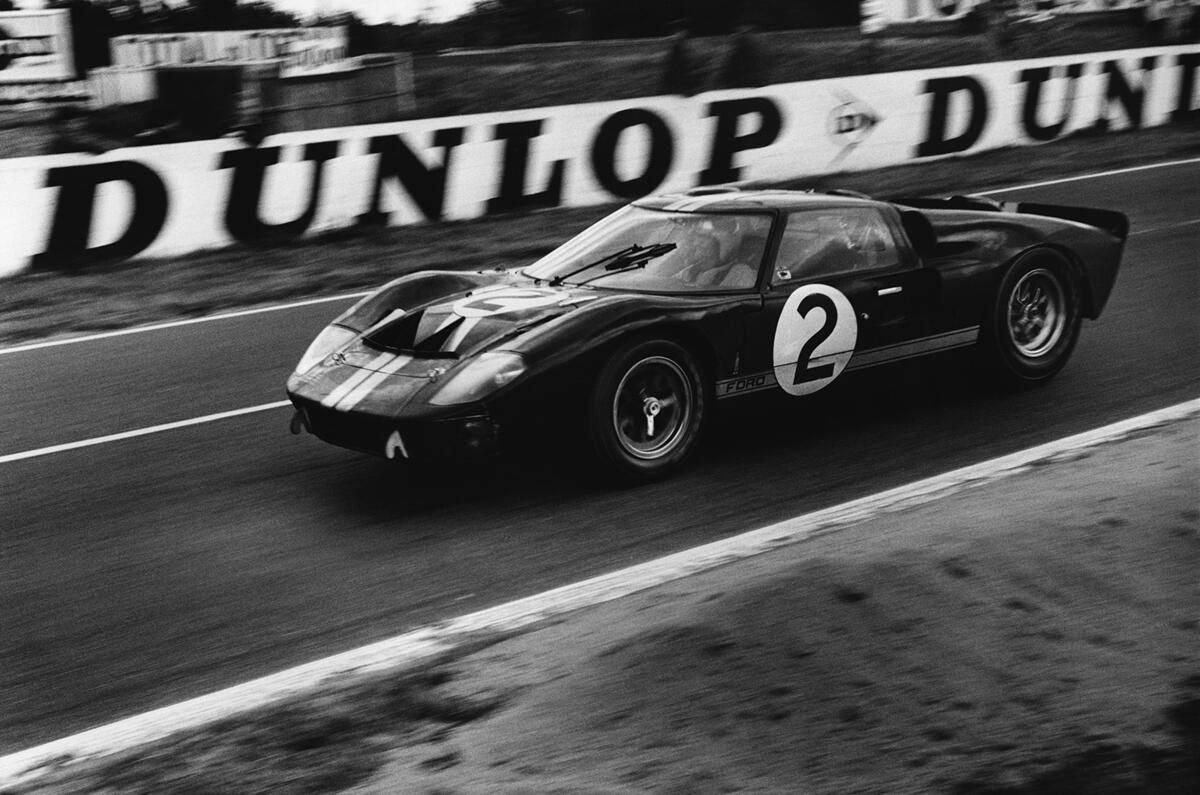
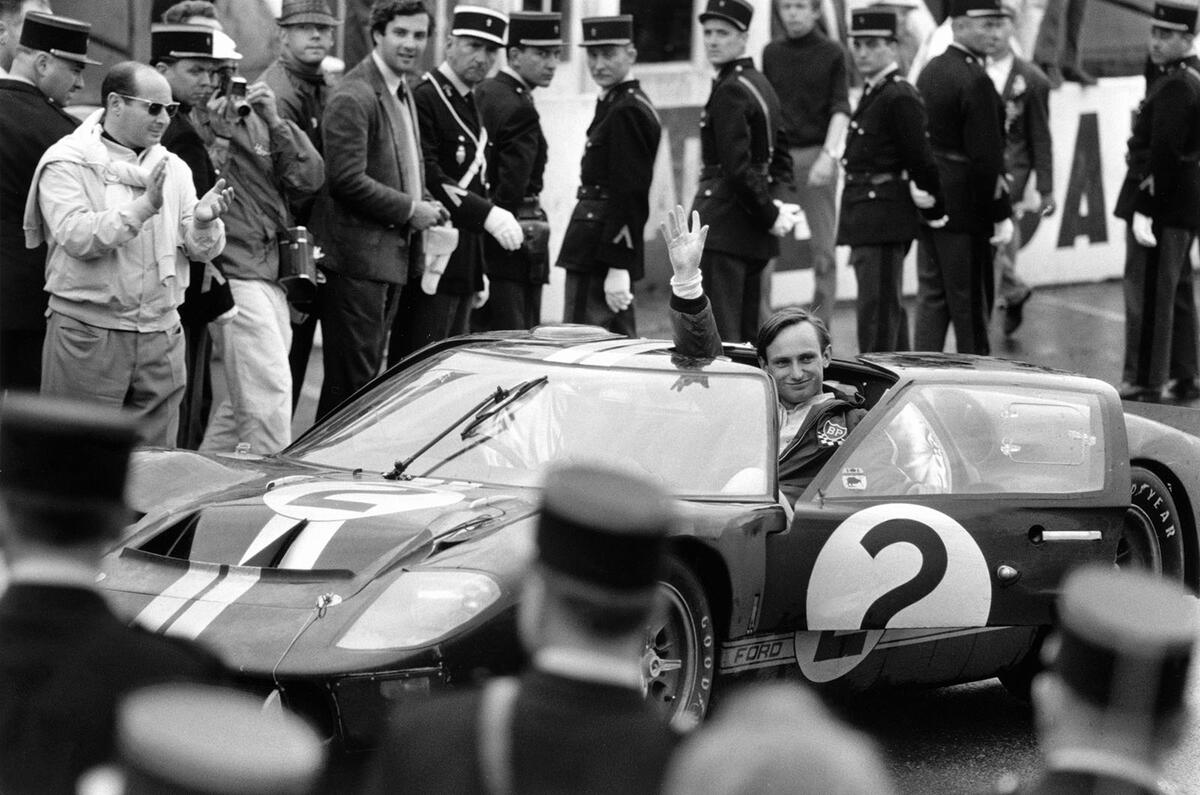
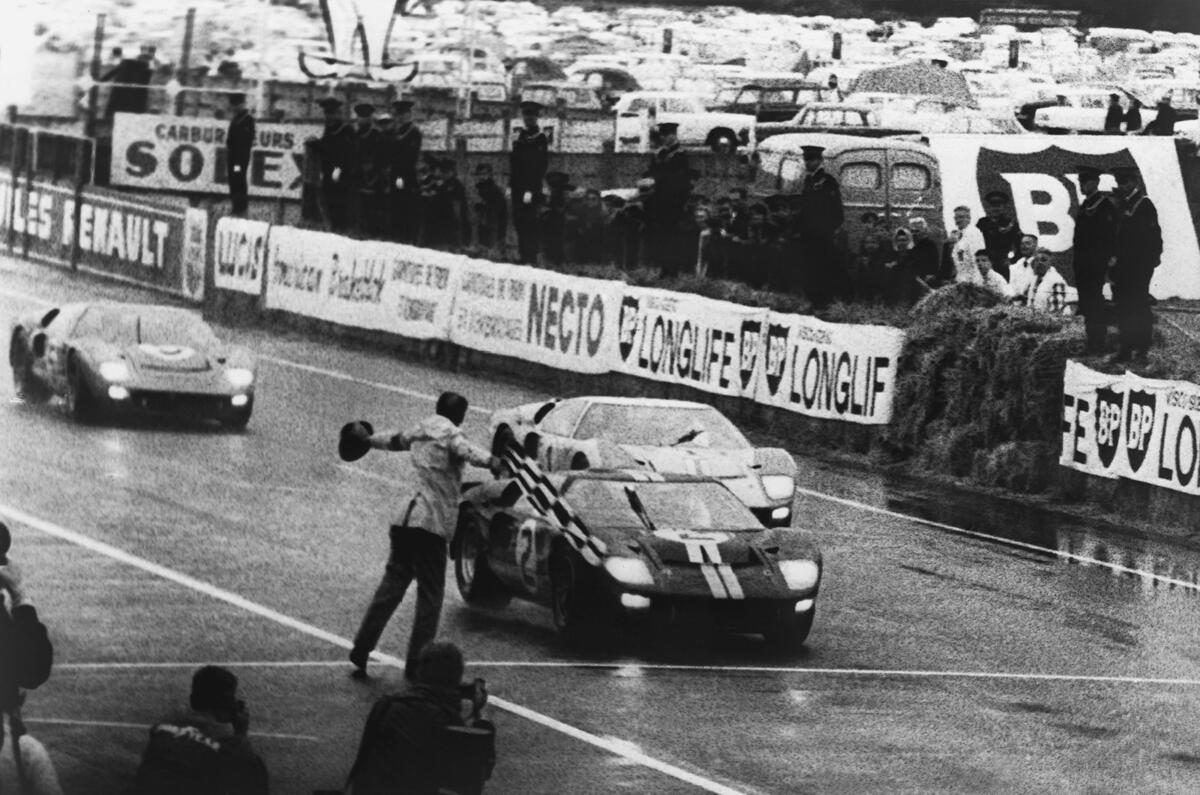

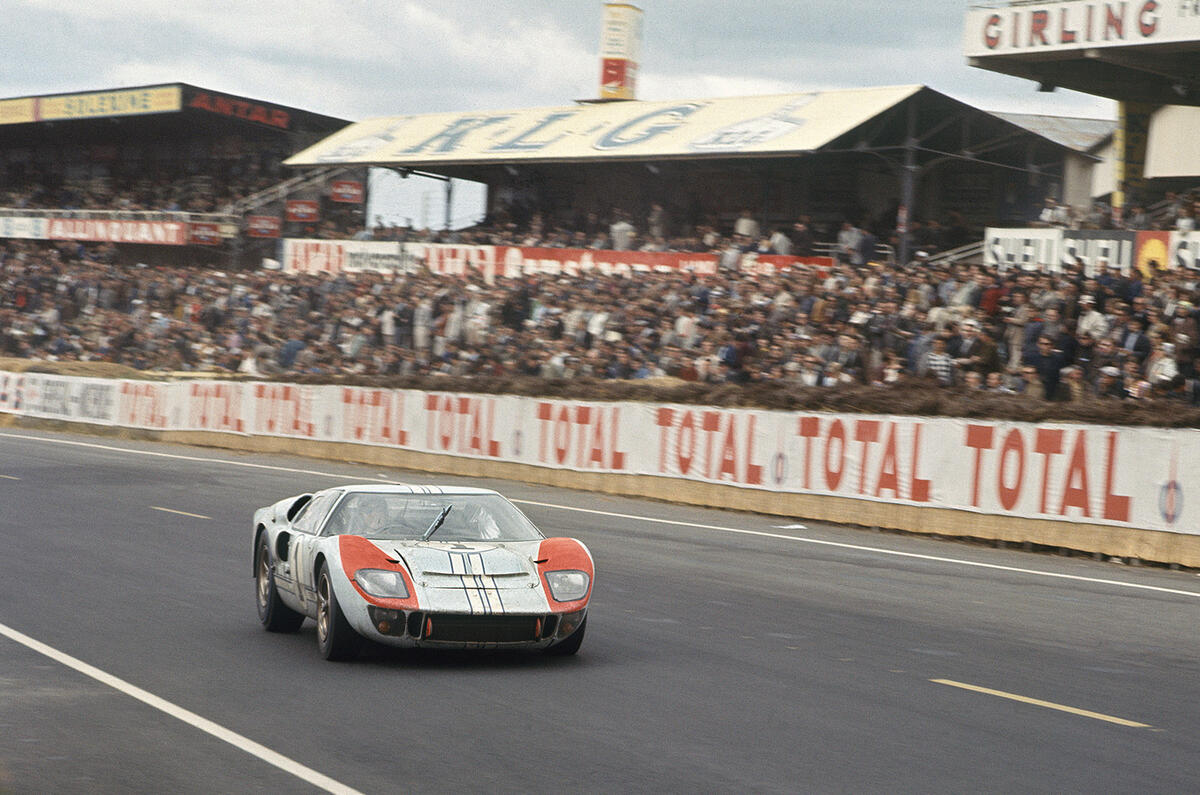
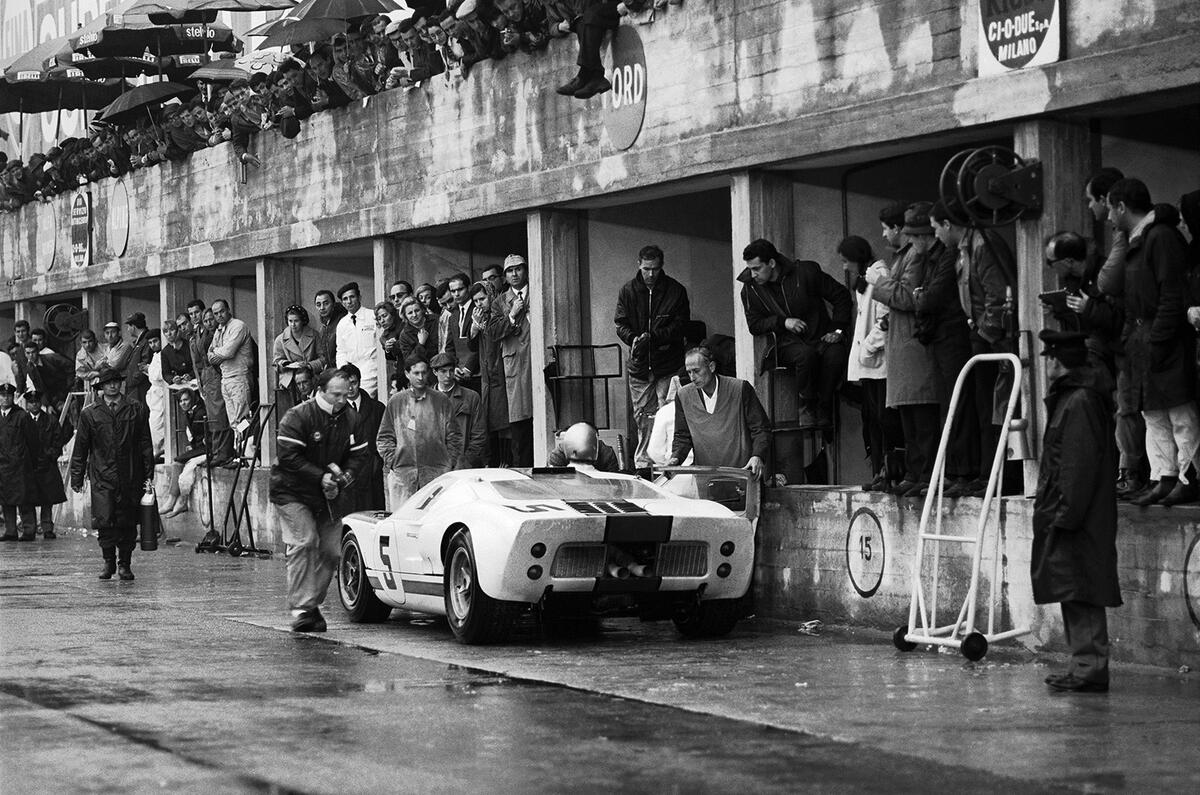
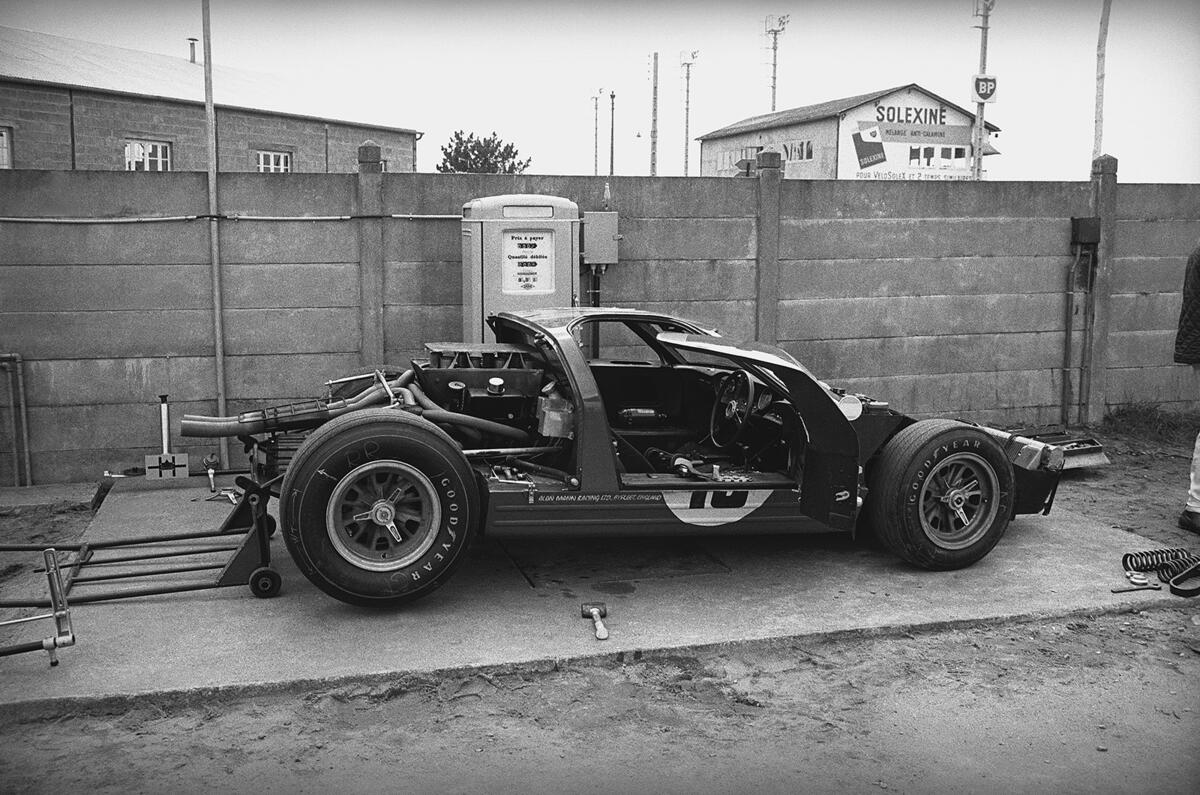
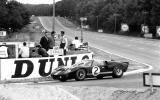

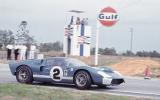
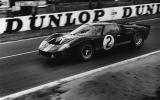
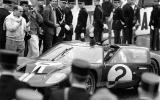
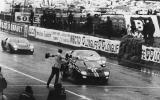
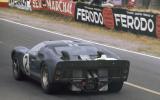
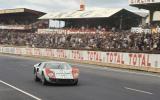
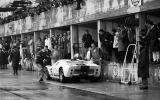
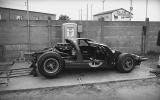


Join the debate
Add your comment
Don't the cars look better